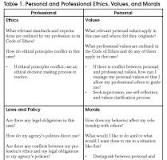The Art of Crafting an Engaging Article
Articles play a crucial role in conveying information, expressing opinions, and sparking discussions. Whether you are a seasoned writer or just starting out, mastering the art of crafting engaging articles can elevate your content and captivate your audience.
Choose a Compelling Topic
The first step in creating an engaging article is selecting a topic that resonates with your target audience. Consider current trends, pressing issues, or unique perspectives that can pique readers’ interest and keep them invested in your content.
Structure Your Article Effectively
Organize your article into clear sections with descriptive headings to help readers navigate the content easily. Use paragraphs to break down complex ideas and maintain a logical flow throughout the piece.
Hook Your Readers from the Start
Capture your readers’ attention with a compelling introduction that sets the tone for the rest of the article. Consider starting with a thought-provoking question, an intriguing anecdote, or a surprising fact to draw readers in from the beginning.
Provide Valuable Insights and Information
Offer unique perspectives, expert opinions, or research-backed insights to provide value to your readers. Make sure your content is informative, relevant, and adds depth to the topic you are discussing.
Use Engaging Language and Visuals
Utilize descriptive language, storytelling techniques, and visual elements such as images or infographics to enhance the readability of your article. Create a sensory experience for your readers that keeps them engaged throughout their reading journey.
Encourage Interaction and Discussion
Prompt readers to share their thoughts, ask questions, or engage with your content through comments or social media platforms. Foster a sense of community around your article by encouraging dialogue and building connections with your audience.
Edit and Revise Carefully
Before publishing your article, review it carefully for spelling errors, grammar mistakes, and overall coherence. Consider seeking feedback from peers or editors to ensure that your content is polished and ready for publication.
In conclusion, crafting an engaging article requires attention to detail, creativity, and a deep understanding of your audience’s needs and interests. By following these tips and honing your writing skills, you can create compelling articles that resonate with readers and leave a lasting impact.
Everything You Need to Know About Writing and Publishing Articles: FAQs Answered
- What is an article?
- How do you write a compelling article?
- What are the different types of articles?
- How long should an article be?
- How can I get my article published?
What is an article?
An article is a written piece of content that provides information, analysis, or commentary on a specific topic. Articles can take various forms, such as news articles, feature articles, opinion pieces, or research articles. They are typically published in newspapers, magazines, websites, or academic journals and are designed to inform, educate, entertain, or persuade readers. Articles often follow a structured format with an introduction, body paragraphs containing the main content, and a conclusion that summarizes key points or offers further insights. Overall, articles serve as a valuable medium for sharing ideas and engaging with audiences on a wide range of subjects.
How do you write a compelling article?
When it comes to writing a compelling article, several key elements can help elevate your content and engage your audience effectively. Start by choosing a captivating topic that resonates with your readers and offers value or insight. Structure your article in a logical and organized manner, using clear headings and paragraphs to guide the reader through the content. Hook your audience from the beginning with an attention-grabbing introduction that sets the tone for the rest of the piece. Provide valuable information, unique perspectives, or expert opinions to keep readers interested and informed. Utilize engaging language, visuals, and storytelling techniques to enhance readability and create a memorable experience for your audience. Encourage interaction and discussion by inviting readers to share their thoughts or questions, fostering a sense of community around your article. Finally, edit and revise your work carefully to ensure clarity, coherence, and polish before sharing it with your audience. By incorporating these strategies into your writing process, you can craft compelling articles that resonate with readers and leave a lasting impression.
What are the different types of articles?
When exploring the question “What are the different types of articles?” one can discover a diverse array of article formats that serve various purposes. From informative news articles that report current events to insightful opinion pieces that express personal viewpoints, the spectrum of article types is vast. Other common types include feature articles that delve deep into a specific topic, instructional articles that provide step-by-step guidance, and investigative articles that uncover hidden truths. Each type of article offers a unique approach to storytelling and information dissemination, catering to different audience preferences and content needs.
How long should an article be?
When considering the optimal length for an article, it is essential to prioritize quality over quantity. While there is no definitive answer to how long an article should be, it is generally recommended to aim for a length that effectively conveys your message and engages your audience. Factors such as the complexity of the topic, the depth of analysis required, and the preferences of your target readers can influence the ideal article length. Ultimately, focus on providing valuable content that is well-structured, informative, and engaging, rather than adhering strictly to a specific word count.
How can I get my article published?
Getting your article published involves several key steps to increase your chances of success. Start by researching potential publications that align with your article’s topic and target audience. Review their submission guidelines carefully and tailor your pitch or submission to meet their requirements. Consider reaching out to editors or publications directly to inquire about their submission process. Networking with other writers or industry professionals can also provide valuable insights and opportunities for publication. Finally, be persistent and open to feedback, as the publishing process can be competitive but rewarding with dedication and perseverance.




